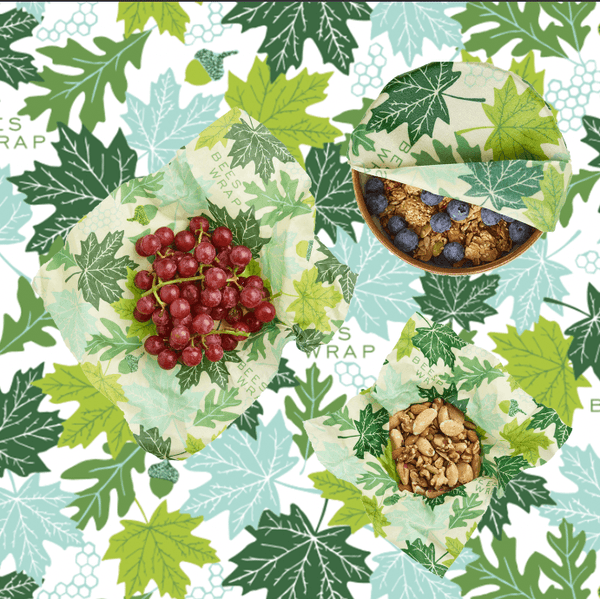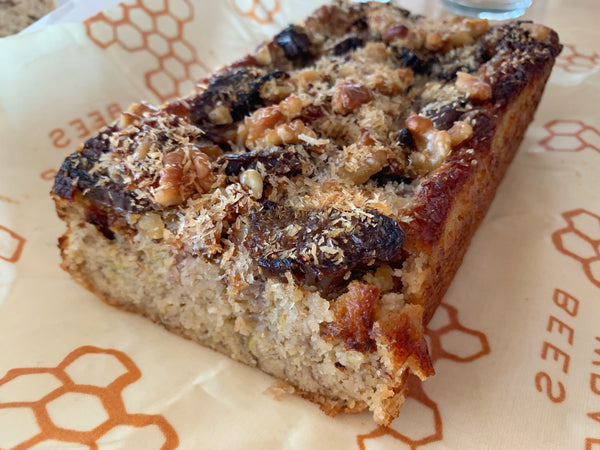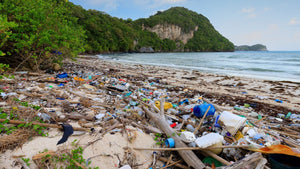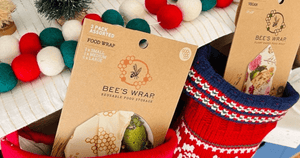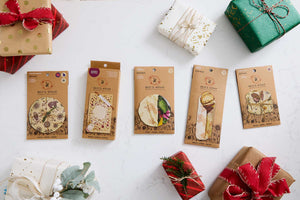How plastics affect sea turtles

We’ve all seen the images — of cast-off plastic bags suspended in the oceans, of beaches strewn with plastic debris. Plastic waste is one of the most important environmental crises of our time. An estimated 8 million metric tons of plastics enter the ocean each year — adding to the estimated 150 million metric tons already circulating there. Plastic already outweighs plankton in our seas, and if we don’t shift course, plastic could outweigh fish in the ocean in 30 years.

This was the inspiration for the Oceans print. In particular, we were inspired by the plight of marine wildlife — our neighbors on this blue planet who’ve inherited the problem we created.

The average sea turtle is estimated to live 80 years — roughly the same life span as the average American. That means there are turtles in the ocean today who were born long before the advent of the modern plastic age, who knew the oceans as home before we began to cast off our plastic debris in such staggering volume. The changes that have come to our oceans have been rapid, relentless, overwhelming.
In one recent study, researchers from the UK, US and Australia sampled all seven species of sea turtle in the world, looking at 102 sea turtles from the Atlantic, Pacific, and Mediterranean Sea. Their findings: Every single one had ingested plastic. Worldwide, scientists estimate that half of all sea turtles have ingested plastic.
An estimated hundreds of thousands of sea turtles die each year from ocean pollution, with many ingesting or becoming entangled in marine debris. Plastic and other garbage looks an awful lot like a jellyfish in some cases — but in consuming this debris, sea turtles can suffer blockages in their digestive systems that may lead to their death. In other cases, plastic in their guts may damage a turtle’s ability to absorb food and nutrients, weakening the animal over time.

The plastic problem starts much lower in the food chain, of course. The majority of plastic in the ocean is what is known as microplastic — tiny fragments, five millimeters or less in size, broken down from larger pieces. They’ve turned the oceans into what scientists are calling a “plastic soup.” Marine animals are consuming this plastic — and we, in turn, consume those animals. Plastic-contaminated fish are now showing up in supermarkets, and scientists are trying to figure out not if we’re eating plastic in our seafood — we already know we are — but what the effects might be, and how it got there.
For our sake, and for the sake of our marine neighbors, we must do better. We’re proud to partner with 1% for the Planet on this product, and have committed to donating at least 1% of sales of the Oceans print to organizations supporting ocean conservancy, beach cleanups, and water stewardship.

It’s our duty to choose change — choosing to reuse, to conserve, to protect. We created the staggering problem of plastic pollution in the oceans. But we, too, can stem the plastic tide. We hope our Oceans print serves as a small reminder in your daily life that we all have choices that add up to big change — and that if we don’t act now, the waters that surround us may never recover.


